-
1 of 253523 objects
Vari Capricci c. 1735-40
Etchings | RCIN 807843

Giovanni Battista Tiepolo (1696-1770)
Master: Vari Capricci Item: A woman and satyr from the Vari Capricci c. 1735-40
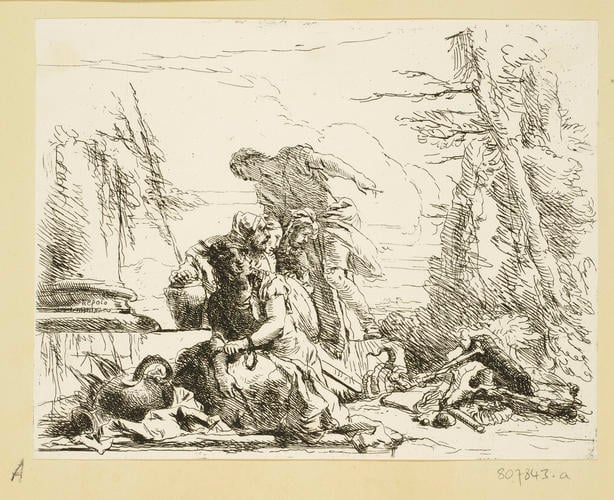
Giovanni Battista Tiepolo (1696-1770)
Master: Vari Capricci Item: A group of figures from the Vari Capricci c. 1735-40
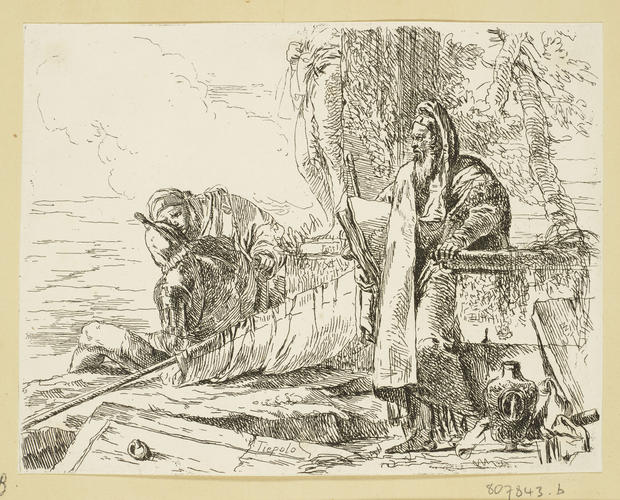
Giovanni Battista Tiepolo (1696-1770)
Master: Vari Capricci Item: A philosopher and a soldier from the Vari Capricci c. 1735-40
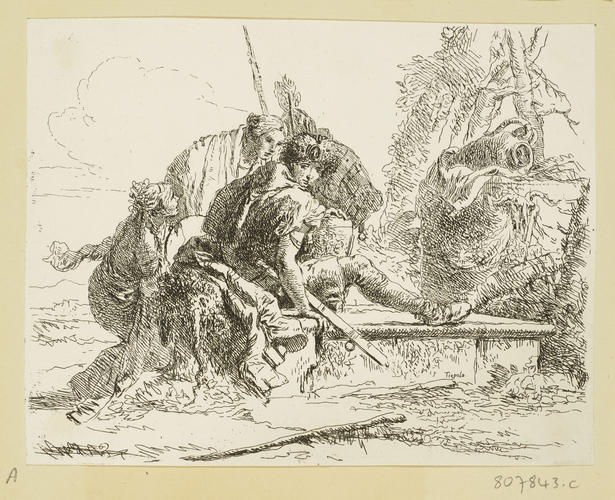
Giovanni Battista Tiepolo (1696-1770)
Master: Vari Capricci Item: A young soldier from the Vari Capricci c. 1735-40
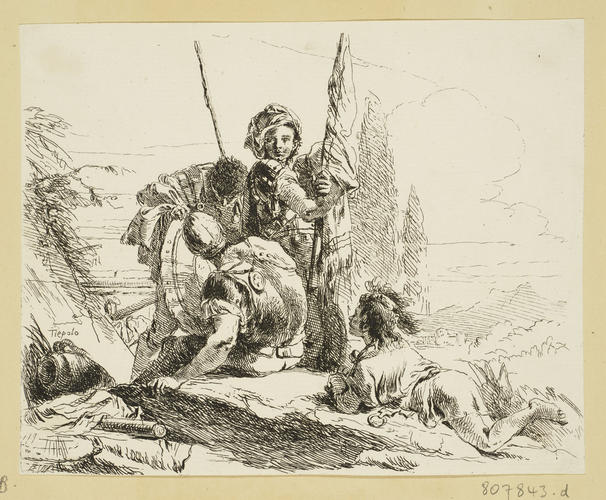
Giovanni Battista Tiepolo (1696-1770)
Master: Vari Capricci Item: A group of soldiers from the Vari Capricci c. 1735-40

Giovanni Battista Tiepolo (1696-1770)
Master: Vari Capricci Item: A woman and satyr from the Vari Capricci c. 1735-40

Giovanni Battista Tiepolo (1696-1770)
Master: Vari Capricci Item: The figure of Death from the Vari Capricci c. 1735-40
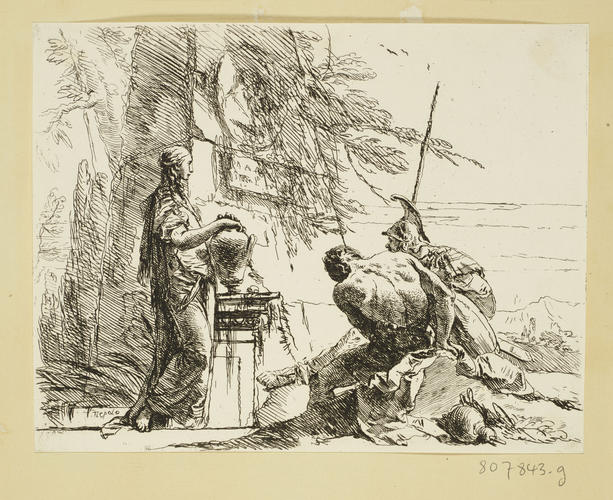
Giovanni Battista Tiepolo (1696-1770)
Master: Vari Capricci Item: Two soldiers at a tomb from the Vari Capricci c. 1735-40

Giovanni Battista Tiepolo (1696-1770)
Master: Vari Capricci Item: A cavalier and his horse from the Vari Capricci c. 1735-40
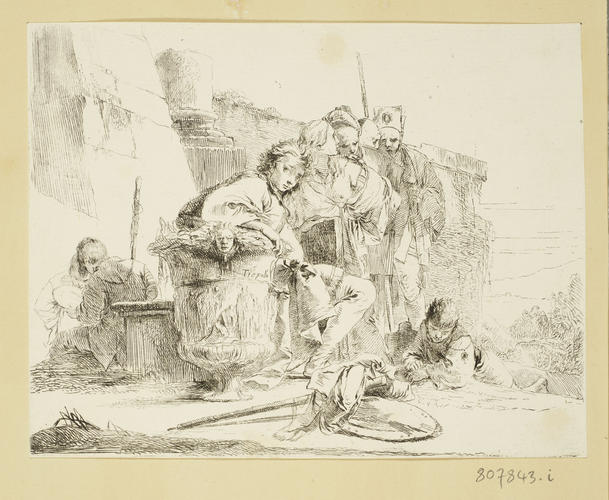
Giovanni Battista Tiepolo (1696-1770)
Master: Vari Capricci Item: A group of figures from the Vari Capricci c. 1735-40
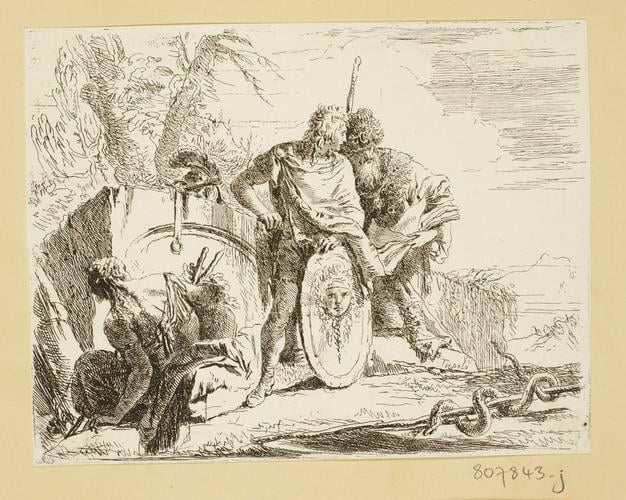
Giovanni Battista Tiepolo (1696-1770)
Master: Vari Capricci Item: A group of figures from the Vari Capricci c. 1735-40











-
Giovanni Battista Tiepolo was one of the most celebrated painters of eighteenth-century Italy. He began making prints in the 1730s, and his first set of ten etchings, known as the Vari Capricci, are a personal response to the prints and drawings of Salvator Rosa and Giovanni Benedetto Castiglione that he had been able to study in the collections of Anton Maria Zanetti the Elder and Zaccaria Sagredo. The prints have no straightforward or overt meanings, though they generally show groups of figures at rest or in contemplation: soldiers and young boys in pastoral landscapes, a horse and rider with a groom, women and children with goats and other animals. Several prints evoke the ancient or Arcadian world, with figures set alongside tombstones, classical urns and fragments of obelisks; in one print the figure of Death is shown reading from an open book, faced by a group of the living.
From about 1742 Zanetti began including the Vari Capricci in his own volume of woodcuts, the Raccolta di Varie Stampe, writing to the Prince of Lichtenstein in 1751 that he had added prints by Tiepolo, ‘being of a most spirited and piquant taste and worthy of the highest esteem’.These prints were followed by a second series of twenty-three etchings, the Scherzi di fantasia, which was not widely circulated until after Tiepolo’s death. Tiepolo’s etchings received great acclaim among collectors and connoisseurs, their enigmatic meanings considered a mark of his brilliance and a successful rendering of the term capriccio. In 1774 Pierre-Jean Mariette wrote of Tiepolo’s ‘rich and fertile genius … it shines above all in his prints’. The dating of Tiepolo’s two etched series, the Vari Capricci and the Scherzi di fantasia, has been the subject of lengthy debate, most recently by Jaco Rutgers (Print Quarterly, XXIII, 3, 2006, pp. 254-63).
Provenance
Probably Joseph Smith; acquired by George III in 1762
-
Creator(s)